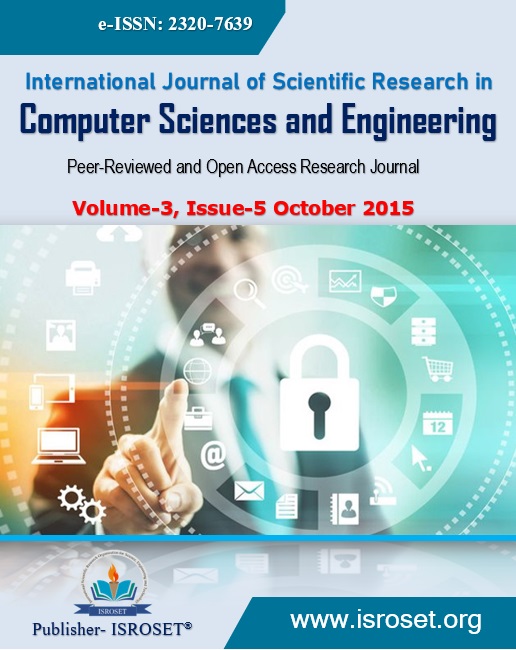Analysis and Recognition of Dialects of Hindi Speech
Keywords:
Dialect Recognition, Feature AnalysisAbstract
Every Individual has some unique speaking style that influences his/her speech characteristics. A major reason for this variability is caused by speaker’s accent due to his native dialect. Prior knowledge of speaker’s accent can help improve the performance of any speech recognizer. In this study, the problem of dialect classification of the spoken utterances in Hindi is considered. A database of four Hindi dialects; Khariboli, Bhojpuri, Haryanvi and Bagheli is created. Six hundred isolated words from Indian travel domain are recorded from 12 male and 8 female speakers of each dialect. In total, forty eight thousand utterances are taken into consideration. Spectral and prosodic features of C1VC2 syllable structure are extracted. Mel Frequency Cepstral Coefficients are computed as spectral feature. Vowel characteristics are measured in terms of formant frequency and duration. These features of different dialects are compared and analyzed with respect to Khariboli, the standard Hindi dialect. Sequence of fundamental frequency is evaluated to study the acoustic features associated with lexical tone. A multi layer feed forward neural network is implemented to show the sufficiency of these features for dialect classification. Experimental results shows that spectral and prosodic features combined together can give 82% recognition of dialect.
References
Huang, R., Hansen, J. H. L. and Angkititrakul P., “ Dialect /Accent Classification using Unrestricted Audio”, IEEE Trans. Audio, Speech and Language Proc.15(2):453-464, 2007.
Sinha, S., Agrawal S. S. and Jain A., “Dialectal Influences on Acoustic Duration of Hindi Phonemes”, in Proceeding of Oriental-COCOSDA, India, 2013.
Huang C., Chen T. and Chang E., “Accent Issues in Large Vocabulary Continuous Speech Recognition”, in International Journal of Speech Technology (7):141-153,2004.
Diakoloukas, V., Digalakis V., Neumeyer L., and Kala J., “Development of Dialect Specific speech recognizers using adaptation Methods” in Proc. IEEE International Conf. Acoustic, Speech, Signal Processing, Munich, Germany: (2),1455-1458,1997.
Miller, D. R. and Trischitta, J., “Statistical Dialect Classification Based on Mean Phonetic Features”, in Proc. IEEE International Conf. Spoken Language Processing, Philadelphia (4): 2025- 2027, 1996.
Arslan, L.M. and Hansen, J.H.L., “ Language Accent Classification in American English” in Speech Communication (18): 353-367,Elsevier, 1996.
Wells, J. C., Accent of English, Vol. 2; Cambridge University Press, 1982.
Kumpf, K. and King, R.W., “Foreign Speaker Accent Classification using Phoneme Dependent Accent Discrimination Models and Comparison with Human Perception Benchmarks” ,in Proc. EUROSPEECH, Rhodes, Greece: 2323-2326, 1997.
Meharbani, M., Boril, H. and Hansen, J. H. L., “ Dialect Distance Assessment Method Based on Comparison of Pitch Pattern Statistical Models” in Proc. IEEE International Conf. Acoustic, Speech, Signal Processing, Dallas, 5158-5161, 2010.
Mishra, D. and Bali, K., “ A Comparative Phonological Study of the Dialects of Hindi” in Proc. International Congress of Phonetic Sciences XVII, Hong-Kong :1390-1393,2011
Rao, K. S., Nandy, S., Koolagudi, S. G., “ Identification of Hindi Dialect Using Speech”, in Proc. 14th World Multi-Conf. on Systemics,Cybernetics and Informatics, Orlando, 2010.
Gaikwad, S., Gawali, B. and Kale, K. V., “Accent Recognition for Indian English Using Acoustic Feature Approach”, International Journal of Computer Applications 63(7): 25-32,2013.
Kulshreshtha, M. and Mathur, R., Dialect Accent feature for Establishing Speaker Identity: A case study, Springer Briefs in Electrical and Computer Engineering, 2012
Haykin S(2002), Neural Networks: A comprehensive foundation, Pearson education Asia, Inc, New Delhi.
Downloads
Published
How to Cite
Issue
Section
License

This work is licensed under a Creative Commons Attribution 4.0 International License.
Authors contributing to this journal agree to publish their articles under the Creative Commons Attribution 4.0 International License, allowing third parties to share their work (copy, distribute, transmit) and to adapt it, under the condition that the authors are given credit and that in the event of reuse or distribution, the terms of this license are made clear.







